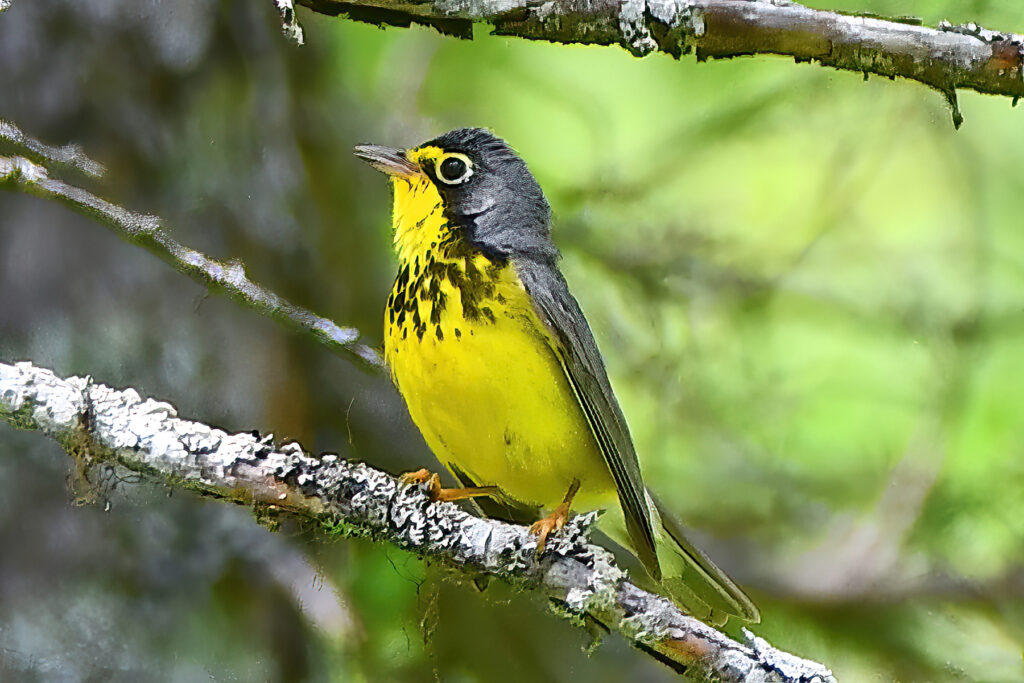
The Canada Warbler is a small songbird that measures approximately 5 inches in length and weighs around 0.3 ounces. It has distinctive yellow underparts and a gray-blue back, with a black necklace and a bold eye-ring. The male and female have similar plumage, but the female is slightly duller in color. The bill is thin and pointed, and the legs are pink.

The breeding range of the Canada Warbler spans from Alaska to Newfoundland and Labrador, down to the northeastern United States. During the breeding season, they can be found in moist deciduous and mixed forests, where they build their nests on or near the ground. They are often seen foraging in the underbrush for insects and spiders.
During migration, the Canada Warbler travels to its wintering grounds in South America. They migrate through eastern North America, crossing the Gulf of Mexico to reach their destinations in countries such as Colombia, Ecuador, and Venezuela. The timing of their migration is largely dependent on the availability of food, and can vary from year to year.
One distinguishing feature of the Canada Warbler is its unique song, which is a series of whistles, buzzes, and trills that sound like “chip, chipperty, chip.” They use this song to establish their territory and attract mates. In addition, their bright yellow underparts and black necklace make them easy to identify.

The Canada Warbler is considered a species of special concern in Canada due to habitat loss and fragmentation. Conservation efforts are underway to protect their breeding and wintering habitats, as well as to monitor their population size and trends. By supporting these efforts, we can help ensure the survival of this beautiful and unique bird species for future generations to enjoy.

